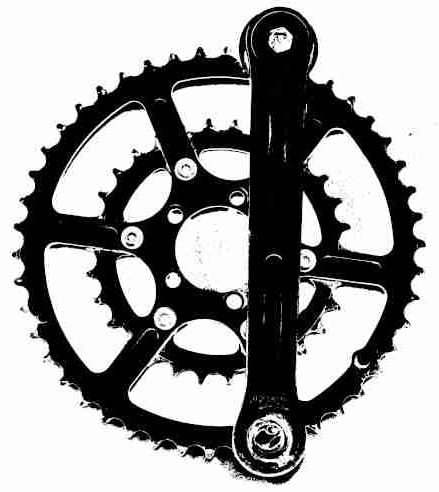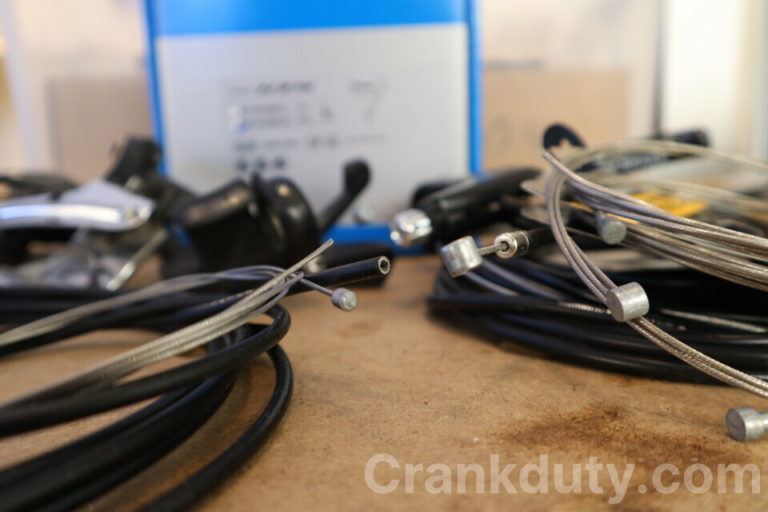Should You Grease the Bottom Bracket Bearings?
Much confusion surrounds bicycle bottom bracket maintenance: what to do, how often or should you rather leave the component alone. Some say that cleaning and greasing is needed every 3 months, others that it’s not needed at all.
The truth is that the need for maintenance depends on the type of bottom bracket you have. This article tells you which bottom brackets need greasing and which do not. The short answer: Most modern bottom brackets use sealed bearings or are sealed as a whole – these systems require no greasing in service. Open angular-contact bearings that need regular re-greasing are found only in some high-end road bike bottom brackets.
Next, we will go through the relevant bottom bracket bearing types from maintenance point of view. After reading this article, you should know if you need to grease your bottom bracket or not. A quick summary also in the table below:
| BOTTOM BRACKET TYPE | Sealed cartridge BB | Sealed- bearing BB | Open bearing BB |
|---|---|---|---|
| Spindles: | Square-taper ISIS Octalink | DUB Hollowtech II | Square-taper ISIS Octalink |
| Bearing position: | inboard | outboard | inboard |
| Maintenance: | replace BB | replace bearings | clean & grease |
Leave sealed alone
Bottom brackets where the bearings are inside seals need no greasing. The bearings have been given a lifetime grease load at the factory and sealed. After that they are water- and dust-proof and maintenance-free. With any issues, the sealed unit is replaced.
(It is technically possible to open the sealed bottom brackets or bearings and some people continue to do so. The challenge is getting the seals back properly.)
Sealed bottom brackets cover probably at least 95% of the market currently. These bottom brackets come in two sub-types: A) Sealed (cartridge) bottom brackets B) Sealed-bearing bottom brackets. Neither sealed type needs re-greasing, but they differ in what is replaced.
Sealed bottom brackets – no grease
Sealed or cartridge bottom brackets are maintenance-free and not meant to be greased. If worn or malfunctioning, the whole bottom bracket should be replaced.
Cartridge bottom bearings were the main type in the 1990s and 2000s. These bottom brackets are usually completely contained within the bike frame, or inboard. Only a thin flange with a keyway may protrude outside the frame.
Cartridge bottom brackets often employ a square-taper spindle, although Octalink (8-tooth spline) and ISIS (10-tooth spline) models are also available.
How to identify: Check if the spindle is a square or 8/10-lobe spline cross section. Check if the bottom bracket is almost completely inside the frame. If either of these is true, there is 90% chance it’s a sealed cartridge.
NB. If the bike is a high-end road bike or very old (pre-1990s), you may also have open bearings. Double check by either checking the parts list or by removing the bottom bracket from the frame. “Sealed cartridge” should be clearly marked on the BB body.
Sealed-bearing bottom brackets – no grease
Bottom brackets with sealed bearings do not need re-greasing or other maintenance. The bearings are meant to be replaced when worn.
More recent bottom brackets like Hollowtech II (Shimano), DUB (SRAM), Power Torque and Ultra Torque (Campagnolo) are not sealed as a whole, but use two separate sealed (cartridge) bearing units.
The bearing units are located in outboard bearing cups and can usually be identified by their blue or orange-red rubber seal rings. The shaft in the compatible cranksets is often hollow, smooth and large-diameter.
These types of bottom brackets can be opened but the bearing units cannot. If the bearings are worn or defective, they should be replaced.
Some instruct to service sealed bearings by applying grease on the outside. This is not very useful but does not hurt either.
How to identify: Check if the bottom bracket has bearing cups (usually black) that protrude more than 5 mm or 1/4″ out of the bike frame. If true, the BB almost certainly has sealed bearings.
Loose balls – grease
Bottom brackets with open bearings and loose balls need periodic re-greasing.
Open bearing bottom brackets are nowadays rare. They are used mainly in some high-end road groupsets where any watt wasted into seal friction is too much. Sealed cartridge and sealed bearing bottom brackets have completely replaced them in other categories.
Bottom brackets with open bearings typically use a square-taper or splined small-diameter spindle (Octalink, ISIS). The bearings are inboard and the bearing cups are inside the frame.
These bearings should be cleaned and re-greased once a year and sooner if the bottom bracket has gotten wet. For maintenance, the bottom bracket must be removed from the frame.
How to identify: Remove the bottom bracket from the frame (open bearing bottom brackets are difficult to tell apart from sealed cartridge bottom brackets from the outside). If the BB comes easily apart or does not have “sealed cartridge” printed on the BB body, you have an open bearing BB.
Q & A
Which grease for bottom bracket bearings?
Any common bearing grease or general-purpose “bike grease” is fine for bottom bracket bearings. The application is low speed and low temperature, and the grease should just have decent load capacity and water-resistance.
Lithium and white lithium greases both work. Silicone grease should be OK too although its load-bearing capacity is more questionable.
How often should you grease the bottom bracket?
Probably never. Sealed cartridge or sealed bearings bottom brackets cover probably 95% of cases and do not need greasing (after assembly at factory). See above.
Periodic greasing is necessary if you have open/loose balls bearings. A greasing interval of 6 months or 2000 miles should be enough in normal riding conditions and 3 months or 1000 miles in wet conditions.
Note that washing your bike (even without a pressure washer) counts as a very wet ride. You will get soap water + debris in or close to your bottom bracket.



